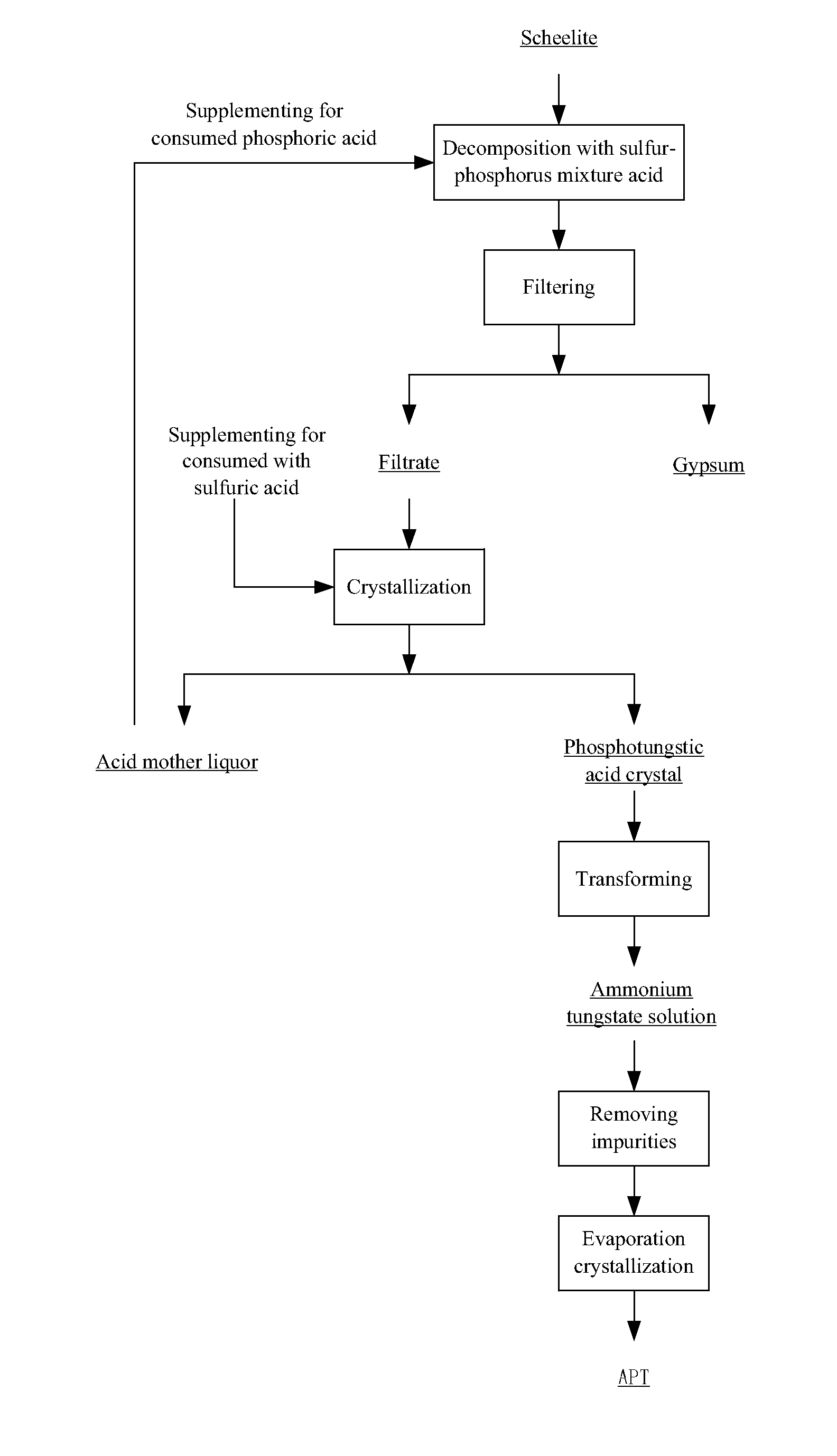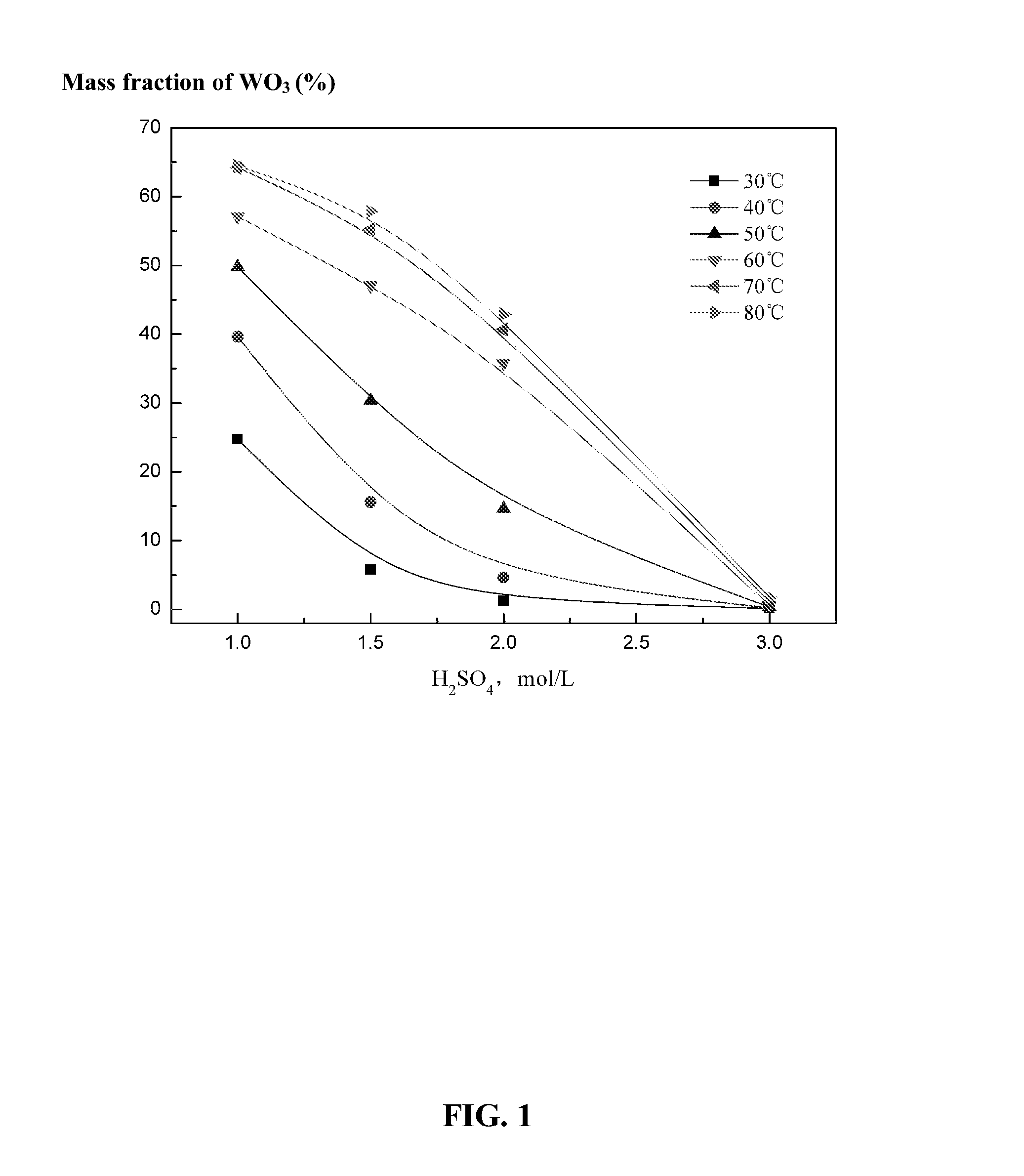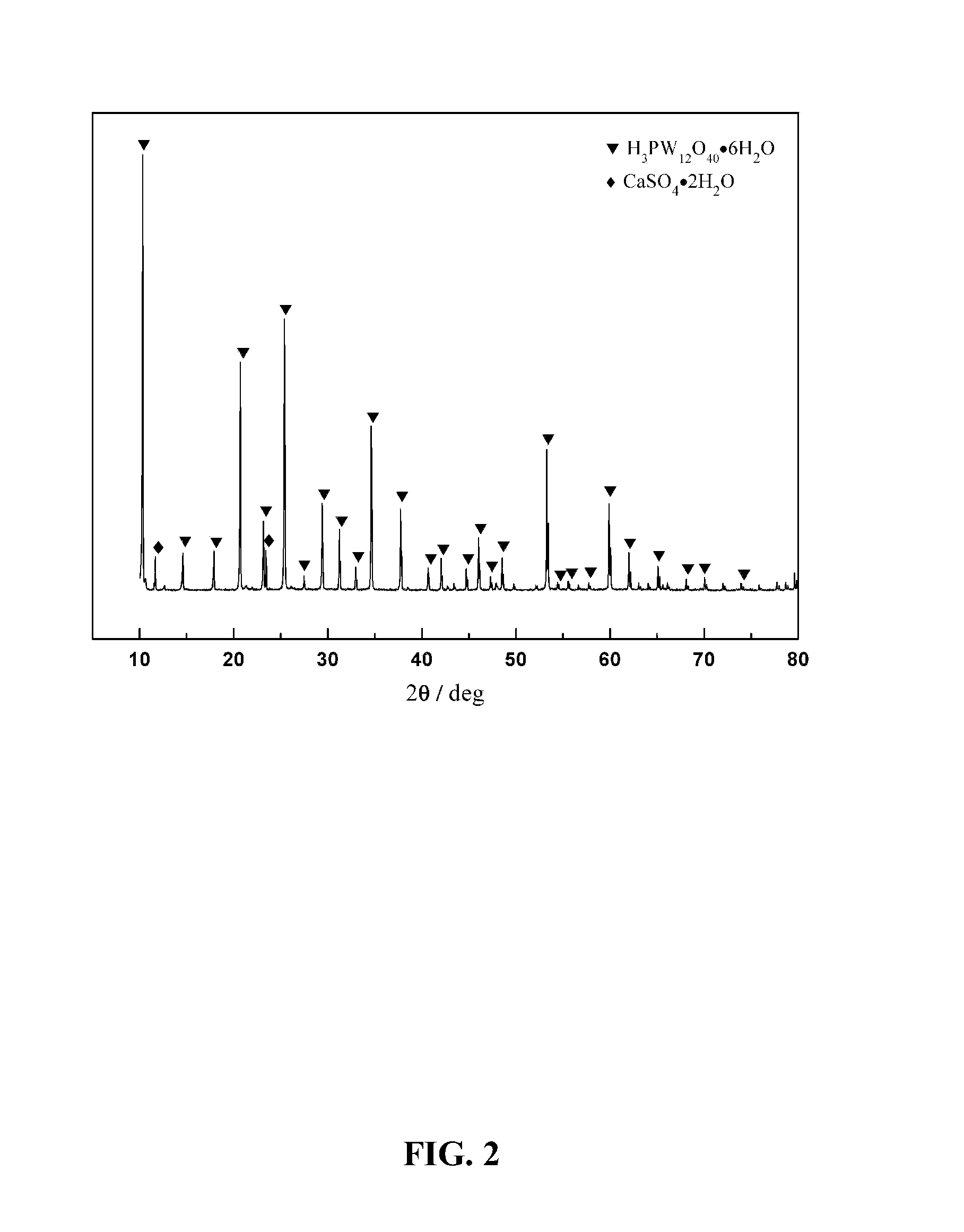Method for extracting tungsten from scheelite
a technology of tungsten and scheelite, which is applied in the field of hydrometallurgical, can solve the problems of difficulty in carrying out further reactions and high production costs of phosphoric acid, and achieve the effect of improving the formation rate of soluble substances
- Summary
- Abstract
- Description
- Claims
- Application Information
AI Technical Summary
Benefits of technology
Problems solved by technology
Method used
Image
Examples
example 1
[0045]Phosphoric acid with a high concentration is adopted which can effectively lower the degree of supersaturation of calcium sulfate during the decomposition of tungsten ore. This is because phosphoric acid can complex calcium ions, so that the solubility of the calcium sulfate increases as the concentration of phosphoric acid increases, and the possibility of the nucleating of the calcium sulfate is lowered. Thus, large crystals are easy to form and a compact calcium sulfate is prevented, and the scheelite is leached effectively. Experiments are carried out as follows:
[0046]A phosphoric acid solution having 20 wt. % of P2O5 was prepared, and sulfuric acid was added and mixed with the phosphoric acid solution to obtain a mixed acid solution; a concentration of H2SO4 was controlled at 150 g / L. Thereafter, 5 L of the mixed acid solution was added into the decomposition reactor, and was heated to a temperature of 90° C. And then 1 kg of a sheelite having 70.6 wt. % of WO3 was added ...
example 2
[0049]A phosphoric acid solution having 20 wt. % of P2O5 was prepared, and sulfuric acid was added and mixed with the phosphoric acid solution to obtain a mixed acid solution, a concentration of H2SO4 was controlled at 150 g / L. Thereafter, 6 L of the mixed acid solution was added into the decomposition reactor, and was heated to a temperature of 80° C. And then 1 kg of a sheelite having 70.6 wt. % of WO3 was added into the decomposition reactor (liquid-solid ratio was at 6:1 L / kg), and the reaction was carried out for 6 h. A leaching rate of tungsten was 99.2%. The reaction was followed with a filter process from which a filtrate was obtained. The filtrate was condensed to a volume that was equal to ⅓ of an original volume by condensed crystallization after being supplemented for a consumed sulfuric acid. In such a condition, a crystallization rate of the phosphotungstic acid was 85.3%. After a second filter, a mother liquor was obtained; after being supplemented for phosphoric acid...
example 3
[0050]A phosphoric acid solution having 15 wt. % of P2O5 was prepared, and sulfuric acid was added and mixed with the phosphoric acid solution to obtain a mixed acid solution, a concentration of H2SO4 was controlled at 300 g / L. Thereafter, 4 L of the mixed acid solution was added into the decomposition reactor, and was heated to a temperature of 90° C. And then 1 kg of a sheelite having 70.6 wt. % of WO3 was added into the decomposition reactor (liquid-solid ratio was at 4:1 L / kg), and the reaction was carried out for 4 h. A leaching rate of tungsten was 99.5%. The reaction was followed with a filter process from which a filtrate was obtained. The filtrate was cooled to a temperature of 30° C. after being supplemented for a consumed sulfuric acid. In such a condition, a crystallization rate of the phosphotungstic acid was 82.1%. After a second filter, a mother liquor was obtained; after being supplemented for phosphoric acid and the water to an original level, the mother liquor was ...
PUM
| Property | Measurement | Unit |
|---|---|---|
| grain size | aaaaa | aaaaa |
| temperature | aaaaa | aaaaa |
| liquid-solid ratio | aaaaa | aaaaa |
Abstract
Description
Claims
Application Information
 Login to View More
Login to View More - R&D
- Intellectual Property
- Life Sciences
- Materials
- Tech Scout
- Unparalleled Data Quality
- Higher Quality Content
- 60% Fewer Hallucinations
Browse by: Latest US Patents, China's latest patents, Technical Efficacy Thesaurus, Application Domain, Technology Topic, Popular Technical Reports.
© 2025 PatSnap. All rights reserved.Legal|Privacy policy|Modern Slavery Act Transparency Statement|Sitemap|About US| Contact US: help@patsnap.com



